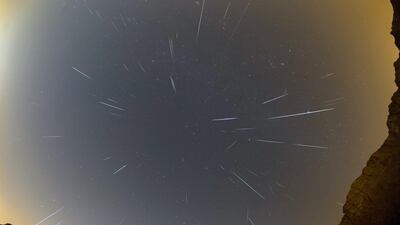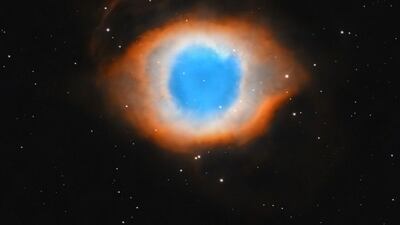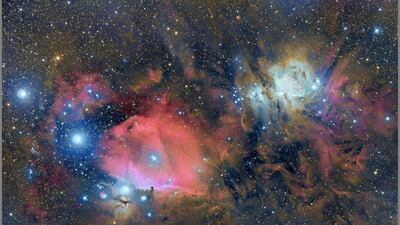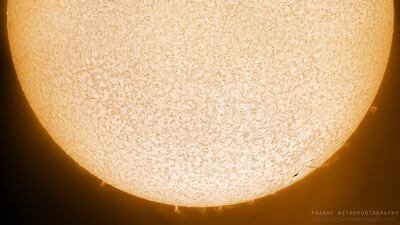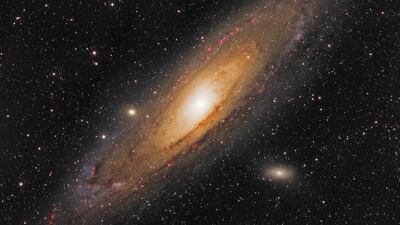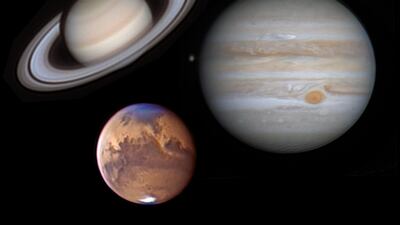An amateur astrophotographer shared a stunning image of the UAE sky raining with meteors.
Prabhakaran Andiappan created the shot from dozens of images he captured during the peak of the Geminids meteor shower on December 13.
About 70 meteors and fireballs can be seen in the composite.
To create it, Mr Andiappan, 30, took 5,000 pictures using two cameras from sunset to dawn, blending the images to make the meteors look like they appeared together.
Each of the cameras used a wide-angle lens and long exposure, with one image every 20 seconds, creating the effect of meteors moving across the sky.
He personally witnessed more than 450 meteors during the time, but only captured 70 on camera.
“That picture was a combination of several pictures captured through the night with two different cameras,” said the 30 year-old from India, who lives in Sharjah and works as education coordinator at Meliha Archaeological Centre.
“You have to keep the camera stationery so you can blend the meteors with the rest of the images. However, because of light pollution they were a bit difficult to blend,” said Mr Andiappan, who has lived in the UAE for three years.
“I had to individually select the meteors and erased the remaining sky to avoid background light pollution glow. Then I blended all the meteors.
“It took me two days to process the picture.”
He specialises in taking images of planets and celestial events and has spent an estimated Dh80,000 on equipment, such as a powerful telescope, for his hobby.
The Geminids are one of several meteor showers that occur throughout the year at predictable times.
However, they are the only showers not generated by a comet, but from what appears to be an asteroid, called 3200 Phaethon, according to Nasa.
How it generates the debris is, however, a mystery. There are several theories, many of which have been dismissed by Nasa.
One of the most popular theories is Phaethon is a rock comet.
“The problem with this theory is that it doesn't account for the amount of dust in the Geminid stream,” said Nasa.
“So what it comes down to is that the Geminid parent object is a mystery.”
The showers were first spotted in the mid-1800s, but at first they only generated around 10 to 20 meteors an hour.
They have since grown stronger into some of the most significant showers because Jupiter's gravity has tugged the stream of particles from 3200 Phaethon closer to Earth over the centuries, according to Dubai Astronomy Group.
The Quadrantids, which peaked on January 3, are currently ongoing but will finish on Sunday.
Next up will be the Lyrids, which are active from April 16 to 30.
